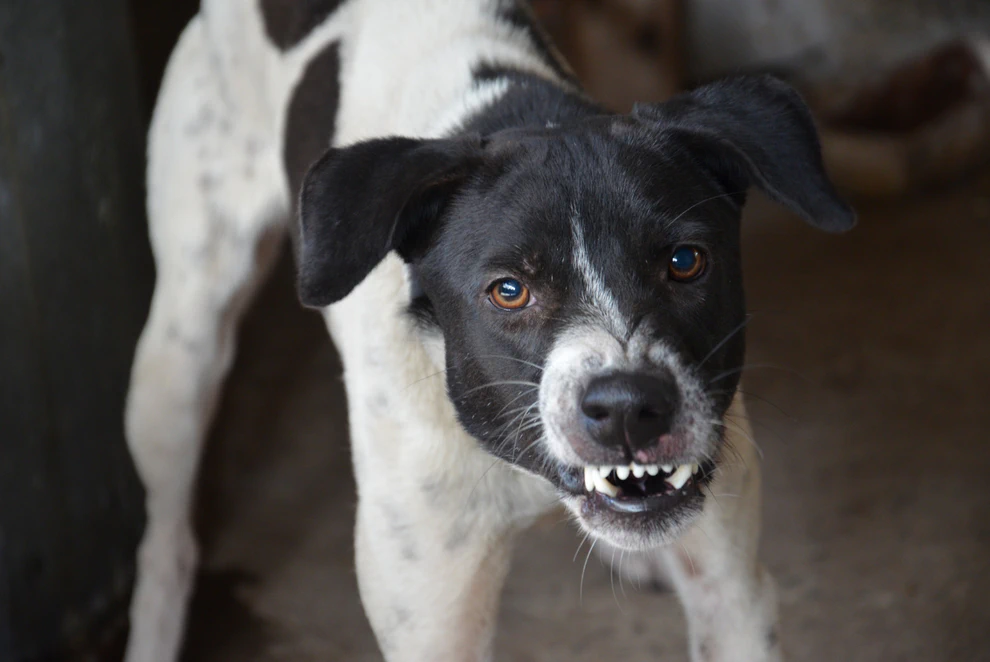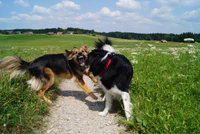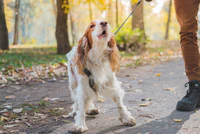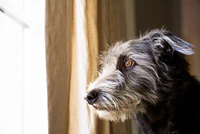Introduction to Canine Aggression
Aggression in dogs is one of the most concerning behaviours for pet owners and society at large. From growling and snapping to more severe incidents like biting, aggressive behaviours can disrupt households, create public safety risks, and, in extreme cases, lead to the dog’s rehoming or euthanasia. Understanding the root causes of aggression is crucial for preventing these outcomes and ensuring the safety of both humans and dogs.
Canine aggression is a complex behaviour influenced by a variety of factors, including genetics, environment, socialization, and even the relationship between a dog and its owner. While aggression is often viewed as a negative trait, it’s important to remember that it is a natural part of animal behaviour, often linked to survival instincts like protection and self-defense. However, in domestic dogs, aggression can become problematic when it’s misdirected or triggered too easily.
In this blog, I’ll delve into the various forms of aggression seen in dogs, examine the factors that contribute to these behaviours, and explore ways to manage and prevent aggression. By understanding the science behind aggression, dog owners can make informed decisions that promote safer, more harmonious relationships with their pets.
Understanding the Different Types of Aggression
Aggression in dogs is not a one-size-fits-all behaviour. It can stem from a variety of motivations, and understanding the underlying cause is key to addressing it. Here are some of the most common types of aggression seen in domestic dogs:
Fear-Based Aggression
Fear is one of the most common triggers of aggression in dogs. A dog may lash out when it feels threatened or cornered, even if the threat is not real. This type of aggression is often seen in dogs that lack confidence or have had negative past experiences. Studies have shown that fearful dogs are significantly more likely to display aggressive behaviour, particularly toward strangers or in unfamiliar environments. Dogs exhibiting fear-based aggression may bark, growl, or bite as a defensive measure, even when there is no direct danger.
Territorial Aggression
Dogs are naturally territorial animals, and they may display aggression when they perceive a threat to their home or space. This form of aggression often manifests when a dog feels that someone or another animal is intruding on their territory, such as when a stranger enters the house or another dog approaches their yard. Territorial aggression can also occur when dogs feel the need to protect specific objects, areas, or even family members.
Possessive (Resource Guarding) Aggression
Possessive aggression, also known as resource guarding, occurs when a dog becomes aggressive over objects it values, such as food, toys, or even their owner’s attention. This type of aggression can develop if the dog feels that these resources are being threatened. Dogs may growl, snap, or bite to protect their prized possessions from perceived intruders, whether they be other dogs or humans.
Social or Dominance-Related Aggression
Social aggression occurs when a dog attempts to assert its position within a social group. In multi-dog households, this behaviour is commonly seen as dogs establish their hierarchy. Social aggression can also manifest toward humans, particularly if a dog perceives its authority being challenged. While the concept of dominance has been somewhat debunked as an overarching explanation for aggression, it still plays a role in certain situations where dogs feel the need to assert control.
Redirected Aggression
Redirected aggression happens when a dog is unable to direct its aggressive feelings toward the source of its frustration and instead lashes out at a nearby target. For example, a dog that becomes agitated by a squirrel outside may turn and bite another dog or a person who happens to be close by. This type of aggression is often a result of pent-up frustration and can be dangerous because it is unpredictable
behavioural and Environmental Factors Influencing Aggression
Aggression in dogs is not solely determined by genetics or breed tendencies—it is heavily influenced by behavioural and environmental factors. A dog’s upbringing, living conditions, social interactions, and experiences all play a significant role in shaping their aggression levels. Understanding these contributing factors can help owners manage or prevent aggressive behaviour.
One of the most critical factors in a dog’s behaviour is early socialization. Puppies that are exposed to a variety of people, dogs, environments, and experiences are less likely to develop fear-based aggression later in life. Socialization helps puppies build confidence and learn how to react appropriately to unfamiliar situations. Conversely, dogs that miss out on socialization during the critical early stages may become fearful, anxious, and more prone to aggressive behaviours, especially in novel environments or around strangers.
Lack of exposure to other animals or humans can cause dogs to feel uncertain and defensive, which often leads to aggression. For example, a dog that has never been around children may feel threatened by their unpredictable movements and sounds, potentially resulting in aggressive reactions.
The dog’s living environment also has a significant impact on their behaviour. Dogs that are isolated or confined to small spaces without adequate physical and mental stimulation are more likely to exhibit frustration, boredom, and ultimately, aggression. Dogs need regular exercise, enrichment, and opportunities to explore their surroundings. When these needs aren’t met, a dog’s pent-up energy can manifest as aggressive behaviour.
Urban environments, where dogs may face constant exposure to new people, loud noises, and unfamiliar animals, can be particularly stressful for some dogs, increasing their likelihood of showing aggression. Studies have shown that dogs living in urban areas are often more reactive and display higher levels of aggression compared to dogs living in rural settings.
Stress is a major trigger for aggression in dogs. Dogs, like humans, can become overwhelmed by stressful situations, leading to aggressive outbursts. Common stressors include loud noises, unfamiliar places, or changes in routine. Chronic stress, if not addressed, can build up over time and lead to unpredictable aggressive reactions.
Additionally, anxiety, particularly separation anxiety, can cause a dog to become destructive and aggressive when left alone. The absence of their owner or changes in their routine can trigger anxiety, leading to behavioural issues that may escalate into aggression.
Training plays a crucial role in shaping a dog’s behaviour. Dogs raised in environments where training is inconsistent or overly harsh are more likely to develop aggression. Punishment-based methods, such as yelling, hitting, or using shock collars, can increase fear and anxiety in dogs, often leading to defensive or fear-based aggression.
On the other hand, positive reinforcement methods—where good behaviour is rewarded—encourage trust and reduce fear, resulting in better-behaved, less aggressive dogs. Owners who are consistent and patient with training often see fewer aggression-related issues.
Dogs are intelligent creatures that require mental stimulation to stay balanced and happy. Without enough activities to engage their minds, dogs can become bored, frustrated, and more prone to aggression. Simple activities like interactive toys, training exercises, and regular playtime can go a long way in preventing aggression caused by frustration or boredom.
In summary, a dog’s environment, experiences, and handling all play crucial roles in their behaviour. By providing proper socialization, mental stimulation, and consistent, positive training, many aggression problems can be mitigated before they escalate. In the next section, we will explore how the personalities of both dogs and their owners influence aggression.
Role of Dog and Owner Personalities in Aggression
Aggression in dogs is not just a result of their upbringing or environment—it can also be influenced by the personalities of both the dog and the owner. The dynamic between a dog’s natural temperament and the psychological profile of its owner plays a significant role in shaping behaviour. Recent studies suggest that aggression is often linked to the emotional and social traits of both the dog and the person caring for them.
Dogs, like humans, have individual personalities. Some dogs are naturally more confident and sociable, while others may be more fearful or reactive. Research has shown that dogs with lower sociability, higher levels of fearfulness, or high levels of chase-proneness are more likely to exhibit aggressive behaviours. For example, a dog that is naturally cautious or fearful may be more prone to react aggressively in unfamiliar situations or around strangers. A common personality trait linked to aggression is fearfulness, as fearful dogs often use aggression as a defense mechanism when they feel threatened. Additionally, dogs with lower playfulness and curiosity tend to be more reactive to novel situations, increasing the likelihood of aggressive responses.
The personality and behaviour of a dog’s owner also significantly influence the likelihood of aggressive behaviour. Studies have found that dogs are more likely to exhibit aggression when their owners display certain personality traits, particularly high levels of neuroticism or anxiety. An owner who is anxious or emotionally unstable may unknowingly transfer these feelings to their dog, leading the animal to become more reactive and stressed. Owners who are overly controlling or distant in their interactions with their dogs are also more likely to see aggression in their pets. For example, owners with insecure attachment styles—characterized by either excessive control or emotional detachment—are more likely to have dogs that display aggression. These dogs may feel unsure about their role in the relationship, leading to defensive or possessive behaviours.
Dogs are highly attuned to their owners’ emotions and often mirror them. This phenomenon, known as emotional contagion, can lead to increased aggression in dogs whose owners are frequently stressed, anxious, or angry. A tense environment can cause dogs to feel unsettled, leading to reactivity and aggressive behaviours. In contrast, calm and confident owners often raise dogs that are more relaxed and less likely to show aggression. Positive emotional connections between dogs and owners, including secure attachment and consistent, gentle handling, reduce the likelihood of aggressive behaviour.
An owner’s level of experience with dogs can also shape their pet’s behaviour. First-time dog owners are more likely to experience aggression in their dogs compared to owners with previous experience. Inexperienced owners may struggle to recognize early signs of stress or fear in their dogs and may not provide the training or socialization needed to prevent aggression. Experienced dog owners tend to have more knowledge of dog behaviour and are better equipped to manage potentially aggressive situations. They are also more likely to use positive reinforcement methods, which are proven to reduce aggressive tendencies in dogs.
The relationship between a dog and its owner is a two-way street. Dogs that feel secure, understood, and supported by their owners are less likely to exhibit aggressive behaviour. On the other hand, dogs that are confused by inconsistent signals or feel neglected may develop anxiety and defensive aggression. Owners who invest time in building a strong, positive bond with their dog—through consistent training, affection, and clear communication—are more likely to raise well-adjusted, non-aggressive dogs.
In summary, both the dog’s innate personality and the emotional landscape created by the owner significantly influence aggression. By fostering a stable, supportive environment and being mindful of their own emotional state, dog owners can help prevent or reduce aggressive behaviours in their pets. In the next section, we will look at how factors such as breed, age, and physical health contribute to canine aggression.
Breed, Age, and Physical Factors in Dog Aggression
While behaviour and environment play significant roles in canine aggression, certain physical and genetic factors, such as breed, age, sex, and health, also contribute. Understanding these factors helps owners anticipate potential challenges and better manage their dog’s behaviour.
Different dog breeds have been shown to have varying propensities for aggression, influenced by their genetics and historical roles. Breeds that were originally developed for guarding, protection, or herding may have higher tendencies for territorial or defensive aggression. For example, German Shepherds, which have been bred for protective roles, may be more likely to exhibit aggressive behaviour in response to perceived threats than a breed like a Golden Retriever, which was bred for docility and companionship.
A large study on aggression found that breeds such as Rough Collies, Miniature Poodles, and Miniature Schnauzers were significantly more likely to display aggressive behaviour compared to breeds like Labrador Retrievers and Golden Retrievers, which are known for their calm, friendly demeanor. While these tendencies do not mean that any specific breed is inherently aggressive, they indicate that breed-specific characteristics can influence how a dog responds to certain situations.
Age is another key factor in dog aggression. Studies suggest that as dogs age, their likelihood of aggressive behaviour increases. Older dogs may become more irritable or reactive due to a variety of reasons, including decreased tolerance for physical discomfort, sensory decline, or cognitive issues like canine dementia. This can result in more aggressive responses, especially in situations that previously didn’t cause stress.
For some dogs, aggression in old age may also be linked to underlying health conditions, such as arthritis or dental pain, that make them more sensitive to touch or less tolerant of being handled. Regular veterinary check-ups and being mindful of an older dog’s physical limitations can help manage aggression in aging dogs.
There are notable differences in aggression levels between male and female dogs. Male dogs, particularly those that are intact (not neutered), are more likely to exhibit aggressive behaviours than female dogs. This is often due to hormonal influences, particularly in intact males who may be more territorial or reactive due to testosterone.
However, aggression is not limited to males. Female dogs, especially those with puppies, may display maternal aggression to protect their young. Spaying or neutering can help reduce certain types of aggression, though research shows mixed results, with some studies indicating a decrease in aggression post-neutering and others showing no significant change.
Interestingly, body size is another factor linked to aggression in dogs. Smaller dogs are often perceived as less aggressive due to their size, but studies have found that small dogs are actually more likely to exhibit aggressive behaviours than larger breeds. This could be due to a variety of reasons, including the fact that small dogs may feel more vulnerable and therefore more defensive, or that owners of small dogs may not prioritize training and socialization to the same extent as those with larger dogs.
Additionally, smaller dogs may not be perceived as dangerous when they show aggression, leading to fewer corrective measures being taken early on. However, the root causes of their aggression—such as fear or anxiety—are just as important to address as they are in larger breeds.
A dog’s physical health has a direct impact on its behaviour, and pain is a major trigger for aggression. Dogs that are suffering from conditions like hip dysplasia, arthritis, or dental disease may become aggressive when touched or approached, as they attempt to protect themselves from further pain.
Regular health check-ups and prompt treatment for any physical discomfort are essential in managing and preventing aggression related to health issues. Pain-related aggression often subsides once the underlying health condition is addressed, emphasizing the importance of maintaining a dog’s physical well-being.
Managing and Preventing Aggression
Effectively managing and preventing aggression in dogs requires a combination of understanding the underlying causes, consistent training, and environmental adjustments. While it can be challenging to address aggressive behaviours, taking proactive steps can significantly improve the situation, ensuring both the dog and their family can live peacefully and safely.
One of the most important preventive measures for aggression is early socialization. Puppies that are exposed to a variety of environments, people, and other animals are less likely to develop fear-based aggression later in life. Puppy socialization classes, structured play with other dogs, and supervised introductions to new people and places all help build a dog’s confidence and reduce anxiety.
Along with socialization, early training is crucial. Positive reinforcement techniques, where desirable behaviours are rewarded, help shape a dog’s responses and make them more resilient to stress. Using rewards like treats, toys, or praise when a dog demonstrates calm, non-aggressive behaviour encourages good habits from a young age.
Punishment-based training methods, such as yelling, hitting, or using shock collars, can escalate aggression. These methods increase fear and anxiety, which are key drivers of aggressive behaviour. Instead, positive reinforcement training methods have been proven to be more effective at curbing aggression while building trust between the dog and its owner. Dogs that are trained using rewards for good behaviour are less likely to act out defensively or aggressively.
Identifying and managing the triggers that lead to aggressive behaviour is essential. For instance, if a dog becomes aggressive when strangers approach, owners should avoid situations where the dog feels threatened until they can gradually desensitize them to these situations. Using distance, barriers (such as leashes or crates), and calm environments can help the dog feel safe while they learn new coping strategies.
In some cases, creating a structured daily routine can help reduce anxiety in dogs. Dogs thrive on predictability, and establishing consistent feeding, walking, and play schedules can decrease the likelihood of aggression driven by stress or uncertainty.
For dogs exhibiting more severe forms of aggression, it’s often beneficial to seek the help of a certified professional dog trainer or behaviourist. These professionals can develop personalized training plans that use behaviour modification techniques, such as desensitization and counter-conditioning. These methods gradually expose the dog to their triggers in a controlled way, teaching them to react calmly over time.
behaviourists can also help identify if the aggression is related to deeper behavioural issues, such as anxiety or fear, and recommend appropriate interventions. In some cases, medication may be prescribed to help manage underlying conditions like chronic anxiety, which can reduce reactive and aggressive behaviours.
Regular veterinary check-ups are essential, particularly for older dogs or those displaying sudden aggressive behaviour. Health issues, such as chronic pain, arthritis, or dental problems, can trigger aggression as the dog tries to protect itself from further discomfort. Addressing these physical issues can often resolve aggression that is directly linked to pain or other medical conditions.
Developing a strong, trusting relationship with your dog is a crucial component of preventing aggression. Dogs that feel secure with their owners are less likely to act out aggressively. Spending quality time together, engaging in training sessions, playing, and providing consistent affection helps strengthen the bond, making your dog more confident and less likely to feel the need to defend itself with aggression.
Promoting a Calm, Confident Dog
Aggression in dogs can be a challenging behaviour for owners to manage, but it is often rooted in understandable causes such as fear, anxiety, poor socialization, or underlying health issues. By understanding the types of aggression and the factors that contribute to it—whether they are environmental, behavioural, or genetic—dog owners can take informed steps to address these behaviours in a positive and proactive way.
At its core, preventing and managing aggression is about building trust and confidence in your dog. This starts with early socialization, continued positive reinforcement, and providing an environment where your dog feels safe and supported. Addressing triggers, maintaining regular veterinary care, and seeking professional guidance when necessary are key to ensuring your dog remains well-adjusted and less prone to aggressive outbursts.
Ultimately, dogs that feel secure, properly trained, and understood by their owners are far less likely to exhibit aggressive behaviours. Every dog is unique, and with the right approach, most aggressive tendencies can be managed or prevented, leading to a more harmonious and trusting relationship between dogs and their families.
References
- Mikkola, S., Salonen, M., Puurunen, J., Hakanen, E., Sulkama, S., Araujo, C., & Lohi, H. (2021). Aggressive behaviour is affected by demographic, environmental and behavioural factors in purebred dogs. Scientific Reports, 11, 9433. [DOI:10.1038/s41598-021-88793-5]
- Casey, R. A., Loftus, B., Bolster, C., Richards, G. J., & Blackwell, E. J. (2014). Human directed aggression in domestic dogs (Canis familiaris): Occurrence in different contexts and risk factors. Applied Animal Behaviour Science, 152, 52-63. [DOI:10.1016/j.applanim.2013.12.003]
- Hsu, Y., & Sun, L. (2010). Factors associated with aggressive responses in pet dogs. Applied Animal Behaviour Science, 123(3-4), 108-123. [DOI:10.1016/j.applanim.2010.01.013]
- Tiira, K., Sulkama, S., & Lohi, H. (2016). Prevalence, comorbidity, and behavioural variation in canine anxiety. Journal of Veterinary behaviour, 16, 36-44. [DOI:10.1016/j.jveb.2016.04.008]
- Salonen, M., Vapalahti, K., Tiira, K., & Lohi, H. (2020). Inadequate socialization, inactivity, and urban living environment are associated with social fearfulness in pet dogs. Scientific Reports, 10(1), 3527. [DOI:10.1038/s41598-020-59837-z]




